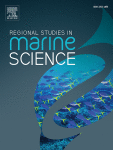
Plastic is one of the most common types of anthropogenic marine litter (AML) found in the world's oceans. Plastic entry into marine ecosystems poses a significant threat to marine ecology. Its ubiquitous prevalence creates serious environmental concerns. To address this issue, a comprehensive survey was conducted on the seven beaches of Sonadia Island, designated as an ecologically critical area of Bangladesh. The research aimed to investigate the abundance and distribution of AML and assess environmental health using four indices. A total of 14809 AML items were collected, yielding an average density of 0.71 items/m². The most abundant AML types were plastic (76.41 %), with a mean density of 0.49 items/m². Fishing and recreational activities are identified as the primary sources of AML on Sonadia Island. The Clean Coast Index revealed that two beaches had 'moderate cleanliness', four were 'dirty', and one was 'extremely dirty'. The Plastic Abundance Index indicated 'moderate abundance' with a mean value of 2.97. Furthermore, the Hazardous Item Index classified four beaches under 'class II', and three were 'class III'. Additionally, the Pollution Load Index calculated at 21.34 signifies a 'hazard level III', denoting high contamination with AML. The results indicate that Sonadia Island's beaches are heavily polluted with AML, particularly plastic, causing significant harm to the local flora and fauna. The research emphasizes the importance of raising awareness about the harmful effects of AML on marine biodiversity. To address this issue, Governments, private organizations, plastic producers and the local community must adopt sustainable waste management practices.